Violets "Whipped cream": description of the variety, features of planting and care
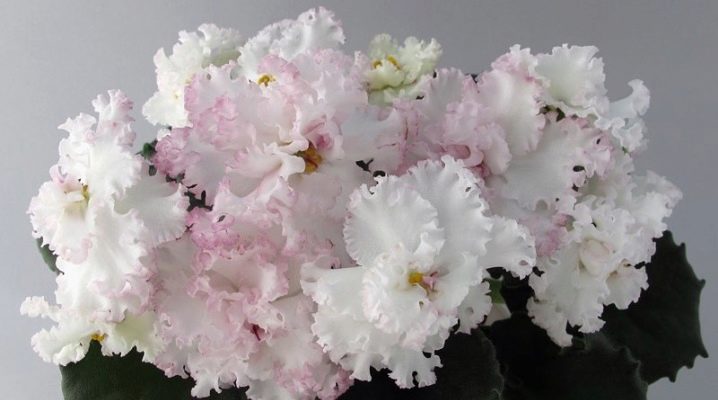
The Saintpaulia variety with the unusual name "Whipped Cream" attracts flower growers with amazingly beautiful white-pink double flowers. It is important to mention that this plant in the common people is called a room violet, therefore it is this term that will often be found later in the text.
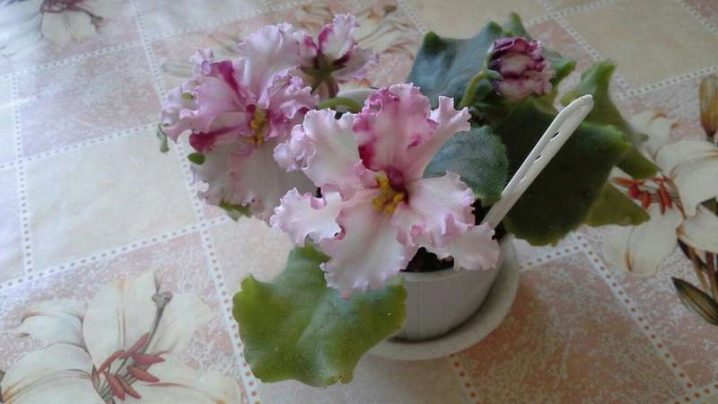
Description of the variety
The Whipped Cream violet was born thanks to the breeder Elena Lebetskaya, and that is why the full name of the variety sounds like "LE-Whipped Cream". If the name "LES-Whipped Cream Lux" is encountered, then in these cases we are talking about the variety of this flower. The leaves, painted in light green, form an elegant rosette, the diameter of which is 17 centimeters. The plates are located on rather long petioles and are characterized by the presence of wavy edges. The seamy side of the leaves is covered with reddish skin.


The double flowers resemble a mountain of whipped cream, which explains the unusual name of the variety. Each petal has a wavy edge, and they themselves are painted both in pure white color, and in a mixture of white and crimson. A large number of strong peduncles are formed, and large flowers with a diameter of up to 6 centimeters grow on them. The color of the flowers always drops out randomly without repeating.
The color palette of Whipped Cream Saintpaulia can change with changing lighting conditions and temperature fluctuations. This also explains the fact that in summer the flowers grow much brighter and more saturated.
Some sports that arise from the propagation of crops can bloom entirely in crimson color.
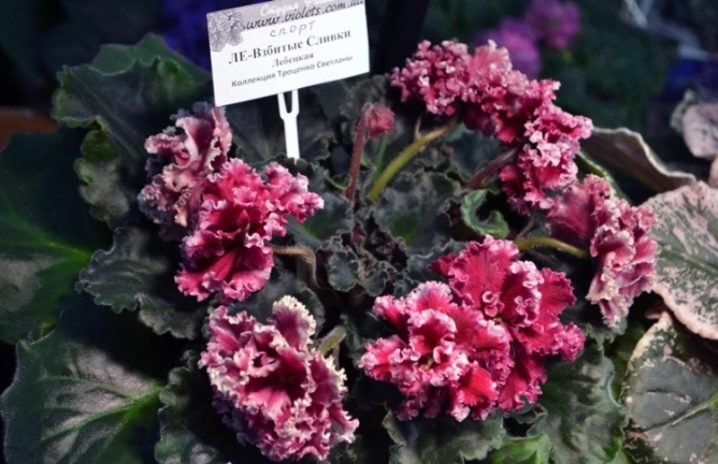
Growing features
To ensure optimal conditions for the development of a violet, it is necessary to provide it with the correct lighting, protect it from drafts, do not forget about irrigation and the introduction of nutrients. Saintpaulia will be able to bloom for nine and a half months of the year, including in winter. In summer, flowering is likely to be interrupted, as excessively high temperatures interfere with it. Whipped Cream potting soil is easy to buy at the store or you can make it yourself. Saintpaulia will love the combination of turf, coniferous soil, sand and leafy soil taken in equal parts. Before use, the mixture will have to be disinfected: either keep it in the freezer for a whole day, or ignite it in an oven heated to 200 degrees for an hour.
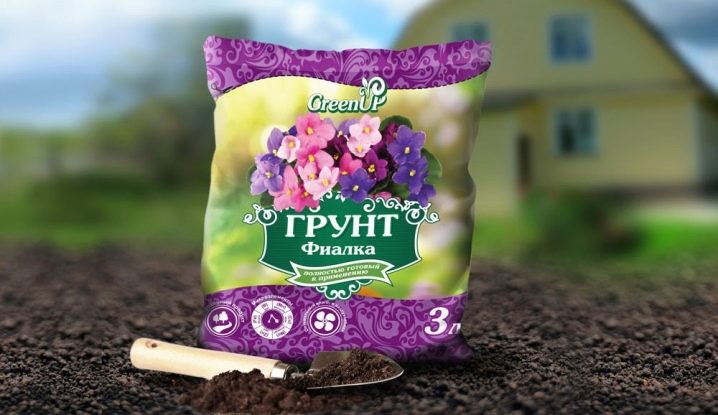
The soil for violets should be saturated with useful substances, loose and permeable to both air and moisture. You should not enrich it with rotted manure, as this activates the build-up of green mass, instead of promoting flowering. To choose the most successful pot, you need to measure the diameter of the outlet - the capacity should be 3 times more than the indicator. Drainage holes must be present to ensure drainage of liquid after irrigation.
The material from which the container is made can be either plastic or clay.
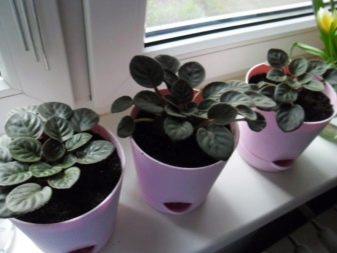
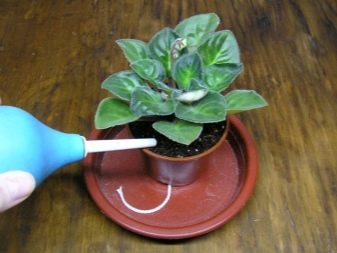
Lighting should be in moderation, as the violet will suffer both in case of direct exposure to sunlight and when in a darkened space. In the cold season, the flower feels great on the windowsills of windows facing south, but in the summer it will have to be rearranged to windows facing north.To create diffuse lighting that Saintpaulia likes, you can place a cloth or white paper between the glass and the plant itself. The violet will need 10 to 12 hours of daylight hours, but during the flowering period it is a good idea to create additional lighting. It is recommended to move the flower pot 90 degrees twice a week. This action will make it possible to achieve uniformity in the development of the leaf outlet.
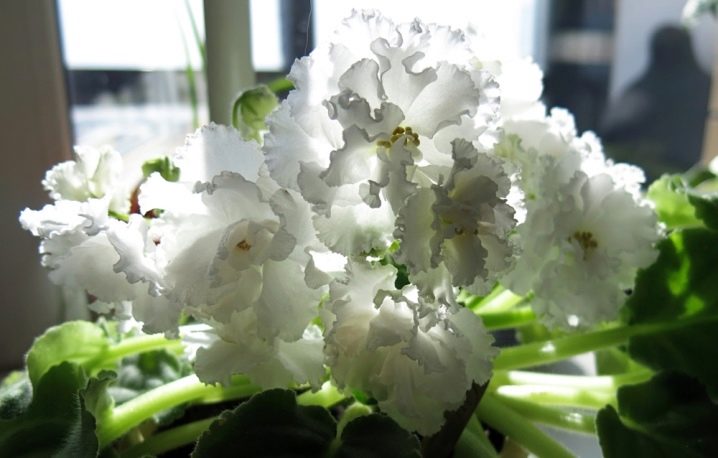
In the summer, the optimum temperature is between 24 and 26 degrees, and in winter, "Whipped Cream" can be grown at 18 degrees of heat. The air humidity should correspond to at least 50%, but it is categorically not recommended to arrange spraying to increase it, as this threatens the appearance of spots of an ugly brown color.
When planting a plant in a pot, you must first create a drainage layer, the thickness of which is 2 centimeters. A small amount of earth is poured over on top, and the seedlings themselves are located. On top of the soil mixture is laid out in a circle, and everything is gently slammed.
It is important that the earth practically fills the pot. Irrigation is carried out only after a day, otherwise the root system will not be able to heal the wounds, and therefore decay may well occur.

Plant care
The most successful way to irrigate violets is to add liquid to the pan. In this case, the root system collects the amount of liquid that it needs, and the excess water is drained after about a quarter of an hour. Thus, it is possible to avoid both overflow leading to decay and underfilling. The need for irrigation is determined by the condition of the soil. If its third upper part is dry, then watering can be carried out. The liquid must be settled and warmed up to at least 30 degrees Celsius.
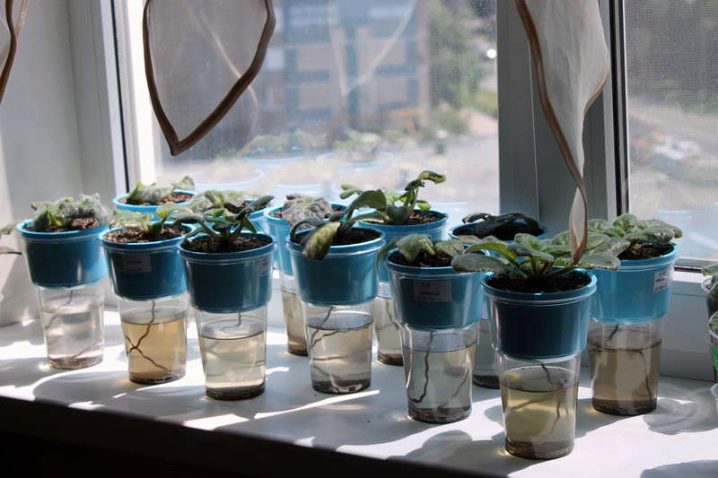
It is better to filter it, and, ideally, boil it, since Saintpaulia does not tolerate hard water containing a large amount of chlorine. It is extremely important to avoid watering with cold water - in this case, the violet may even die. With top watering, the liquid is poured either strictly under the root or along the edges of the pot. Fertilization is carried out twice a month using complex formulations suitable specifically for Saintpaulia.
Since top dressing is allowed to be introduced only into wet soil, it is convenient to combine the procedure with irrigation.
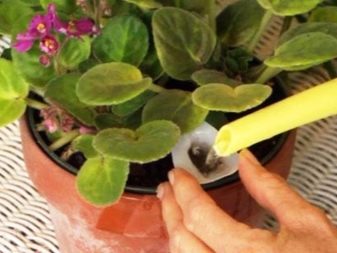
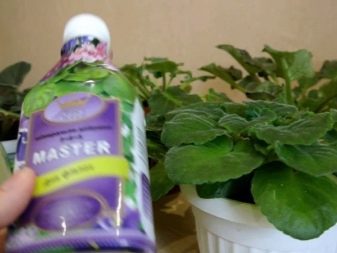
The ideal temperature for the Whipped Cream Violet is 22 degrees., therefore, with its natural increase, it is necessary to increase the humidity. You can increase this indicator by installing a special humidifier for air in the room or an ordinary glass of water. Alternatively, the flower pot can be simply transferred to the kitchen. At least once a month, Saintpaulia should be washed under the shower, remembering to cover the ground with plastic wrap.
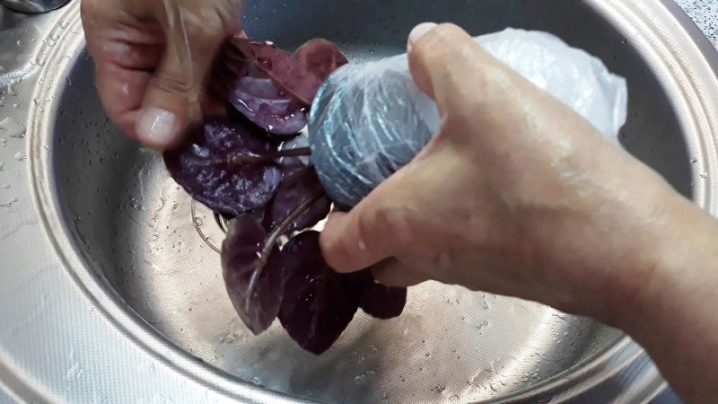
Transfer
Whipped Cream is transplanted from early spring to early summer. Its need is explained by the fact that over time, the soil is running out of nutrients, and it just needs to be replaced with a new one. About a day before the procedure, the flower is well moisturized. In addition, the following are being prepared:
- plastic container of the required size;
- a commercial soil mixture suitable for a particular plant variety;
- materials that form the drainage layer: expanded clay, pebbles and other similar material.
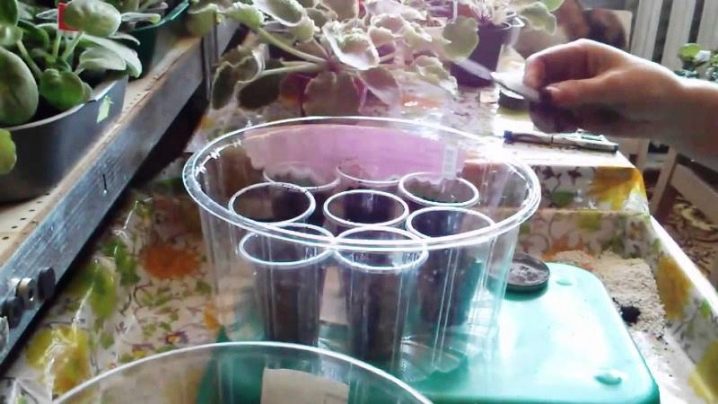
The diameter of the pot should be three times the diameter of the rosette, so that the violet does not give all its strength in the future to the formation of the root system.

Reproduction
Propagation of Saintpaulia "Whipped Cream" is carried out by using seeds or cuttings, or by dividing the rosettes. The use of seeds is inherent only in specialists who breed unique varieties, and amateur gardeners adhere to simpler methods. Division of outlets is not difficult even for novice gardeners.The essence of the method lies in the fact that another outlet grows in the pot on its own, and it only has to be planted in another pot. Cutting propagation is more convenient to carry out with leaves.
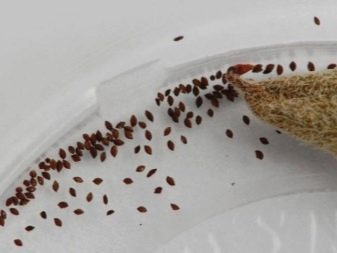

The sheet used is cut from the middle of the outlet. It is important to keep track of that it is still young, but already strong, and that the petiole has a considerable length. The latter will help to improve the situation in the event of decay. The cut is made at an oblique angle with a pre-cut tool. It is more convenient to root the stalk in a glass of water in which an activated carbon tablet is dissolved. After some time, the leaf will have roots, and it can be transplanted into a full-fledged soil under a glass jar or plastic sheet, which will be removed after 1.5-2 weeks.
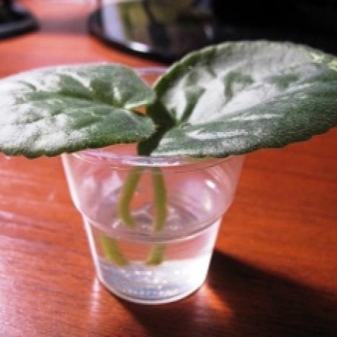
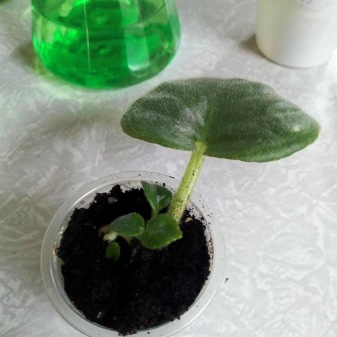
Diseases and pests
Virtually all diseases afflicted by Whipped Cream Violet are the result of improper care. For example, the unnatural lifting of the sheets and their stretching upwards indicates insufficient lighting. In turn, the lowering of the leaves signals an excess of sunlight. Sluggish leaves and rotting cuttings are the result of excessive moisture. Brown spots on the plates are most often a temperature burn that occurs in summer from direct sunlight, and in winter from icy air.
Powdery mildew is activated by high humidity and excessive watering.
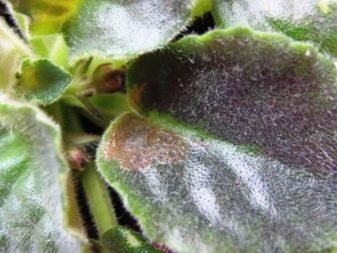

For information on how to grow violets and care for them, see the next video.































The comment was sent successfully.